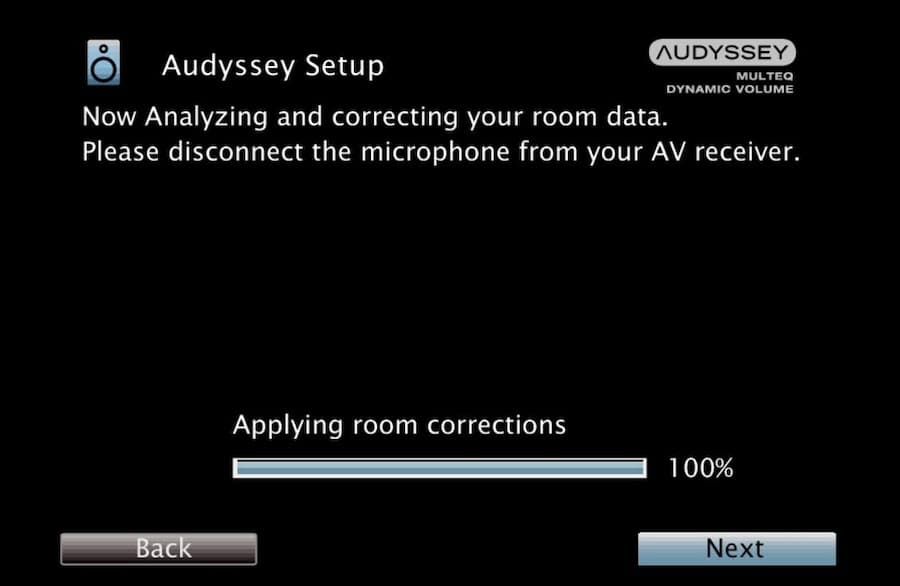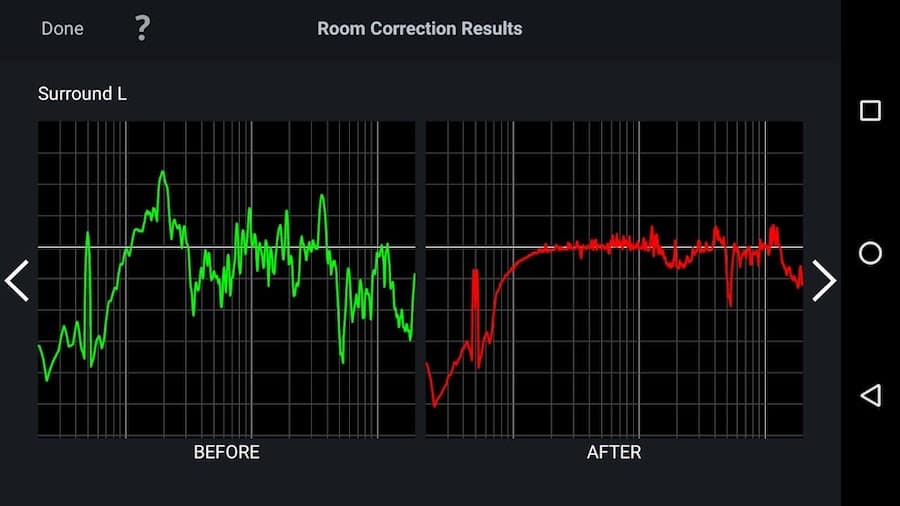Room correction is an important part of setting up a home theater system for best speaker performance. There are many systems such as Anthem Room Correction (Anthem AV), AccuEQ (Onkyo), MCACC (Pioneer), DCAC (Sony), YPAO (Yamaha), Dirac Live (Select Brands), and Audyssey MultEQ (Denon/Marantz).
Audyssey has been licensing its MultEQ system to AVR makers since 2004, and currently provides its system to Denon and Marantz.
MultEQ
MultEQ is the basic room correction feature included in many Denon and Marantz Home Theater Receivers. The user plugs in a provided microphone that receives test tones generated by the receiver. The receiver then analyzes the test tones and determines factors such as speaker distance, speaker level, and crossover points. The receiver then saves those settings.

MultEQ Editor

The MultEQ Editor works with the MutlEQ feature in the receiver but adds more features such as:
- View speaker detection results, to check correct installation.
- View before and after results of the Audyssey calibration, making it easier to identify room problems.

- Edit the Audyssey target curve for each channel pair to suit your tastes.

- Adjust the overall EQ frequency roll-off for each channel pair.
- Switch between 2 high frequency roll-off target curves.
- Enable/Disable midrange compensation to make the sound brighter or smoother.
- Save and load calibration results.
The MultEQ Editor App is available for both Android and iOS for a price of $19.99.
Note: The apps download pages list the compatible smartphones and AV receivers.
MultEQ-X

MultEQ and MultEQ Editor provide good ways to tweak your home theater receiver and speaker performance, but Audyssey has announced an additional tool for optimizing a home theater setup: MultEQ-X
MultEQ-X is a software application available for installation on Windows PCs. Currently, it works with select Denon and Marantz Home Theater Receivers. Just as with the MultEQ and MultQ Editor options, you initially connect the provided microphone to the receiver, but the setting options are more extensive as the receiver and PC communicate over your home network.

What makes Audyssey MultEQ-X practical is that provides:
- Greater control over calibration parameters
- More detailed information about room acoustics.
- Subwoofer-level adjustment with slow and super-slow time rates.

- Measurement with detailed frequency responses for individual channels for easy room tuning.

- Advanced target curve designer that includes a “Cutoff Mode” control.

- Complete control over target sound for every channel and every preset

- Manual override of all automatically detected parameters.

This new layer of features provides an additional tool for both home theater enthusiasts and home theater installers to “squeeze out” the best possible performance from a compatible AVR and each of its speakers (and subwoofer).
Once downloaded and installed on a PC, MultEQ-X includes a virtual demonstration AVR to get you familiar with its available features and settings.
However, to calibrate an AVR, a license must be obtained via an in-app purchase of $199.99. The Audyssey software only works on Windows and can be purchased in the Microsoft Store.
The license for the calibration of a selected AVR is for its entire lifetime. Licenses are per-user and per-AVR-serial-number and are non-transferrable. For more details (including terms of use and a listing of compatible Denon and Marantz AVRs), and purchase, refer to the MultEQ-X page in the Microsoft Store.
PC Requirements: Microsoft Windows 10 (64-bit version), with the October 2018 update or later installed (version 1809 / Build 17763). This includes Windows 11.
Some of the supported A/V Receivers include:
Denon
AVR-X3700H: $1,499.98 at Amazon
AVR-X1700H: $949.97 at Amazon
AVR-S960H: $749.99 at Amazon
Marantz
SR8015: $3,799.00 at Amazon
SR7015: $2,799.00 at Amazon
SR6015: $1,999.00 at Amazon













































bryan pinto
January 3, 2022 at 11:16 pm
Pay for the receiver.. And then pay 199 for the calibration software that is tied to the serial number of a single receiver. What a bloody joke.
Cisco
January 24, 2022 at 8:43 am
@bryan pinto for real price should have been less then 200 that price is crazy
buzzsaw
January 29, 2022 at 8:05 pm
that’s exactly what is used to cost for the pro kit license not including pro kit mic